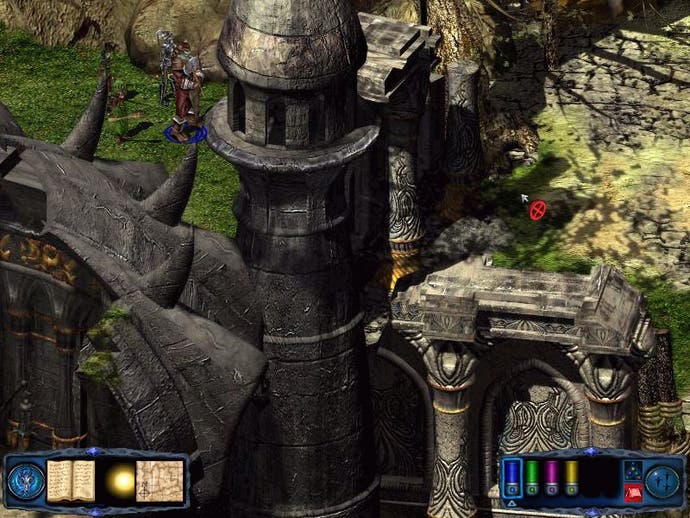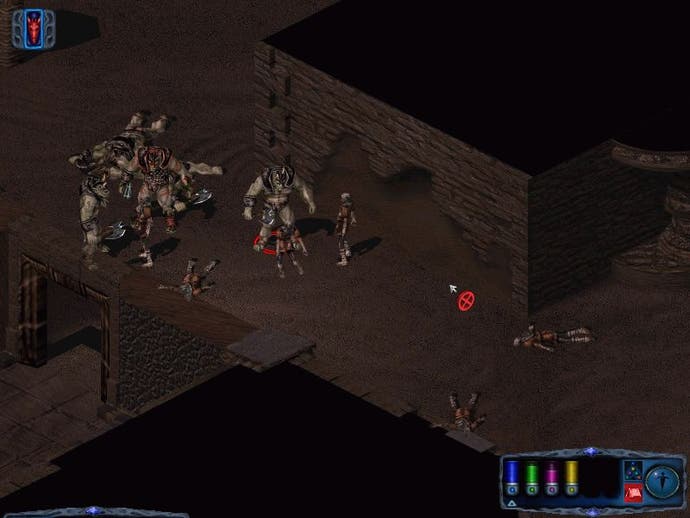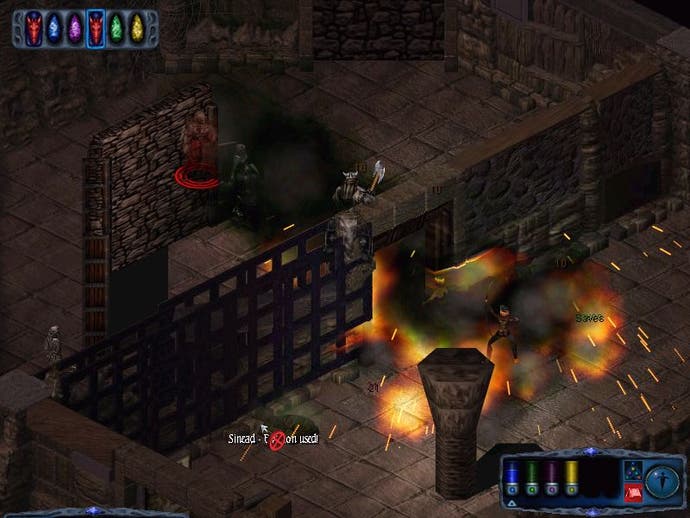Pool of Radiance - Ruins of Myth Drannor
Preview - is the sequel we've all been waiting for, or just another Dungeoneering For Dummies?
Back in the distant mists of time, before the age of Diablo, Everquest and Baldur's Gate, SSI's Gold Box series was the king of the role-playing genre. Now Stormfront Studios and French publisher UbiSoft are hoping to capture the magic of the original with a new sequel based on the latest 3rd Edition AD&D rule set. We delved into a beta version of the game to find out more...

The B-Team
As in the original, the action centers around the Pool of Radiance, a magical McGuffin which creates a wave of energy that turns anyone it touches into a shambling undead creature of the night. Needless to say, when the old Pool under the city of New Phlan re-activates this is considered to be a Bad Thing™.
Immediately a group of the country's finest heroes is assembled by the mage Elminster and sent off to the ruined elven city of Myth Drannor to discover what has caused the Pool to come back to life. Unfortunately they vanish, and in a fit of desperation Elminster rounds up you and your mates from the local pub and sends you through a magical portal to find out what happened to the real heroes. As you may have guessed, the first party are all dead or missing by the time you arrive, and so it falls to you to uncover what is going on under Myth Drannor and put a stop to it before Phlan becomes uninhabitable.
All of this is somewhat academic though, because the game essentially boils down to a good old fashioned dungeon crawl. What plot there is seems to be rather thin on the ground, certainly in the early stages of the game, and because the city you are exploring is ruined there aren't many people that you will want to stop to talk to. Those of you hoping for a character-led epic along the lines of Baldur's Gate should probably look elsewhere.

Lethal Weapon
The game centers around combat, but unlike most modern role-playing games, Ruins of Myth Drannor has gone back to its Dungeons & Dragons roots by using an initiative-based system, with characters and monsters taking it in turns to move and attack each round.
Although this creates a more tactical experience, with full use made of the new 3rd Edition skills, feats and special attacks, the result is a little plodding compared to the likes of Icewind Dale and Diablo. Movement during combat is painfully slow, and even if you decide to limit how much time you are given to plan a character's move fights frequently last for upwards of five minutes. This wouldn't be a problem, except that much of your time seems to be spent dispatching room after room of monsters for no obvious good reason. Which can get a bit frustrating.
Combat is also surprisingly lethal, with even a handful of orcs or skeleton warriors posing a serious threat to low level characters. A single critical hit can be enough to knock out one of your party members, and unless you are quick with the healing magic they may be beyond repair by the time the battle is over. Perhaps the game hasn't been fully balanced yet, but the version we played seemed a little on the tricky side. Sadly the developers seem to have compensated for this by scattering healing fountains and pools throughout the levels, which turns the game into a monotonous succession of long drawn-out battles interspersed by diversions to the nearest body of magical water to heal up your party.

Dark And Long
Unfortunately there are no two ways around this; much of the first section of the game is horrendously boring. Things start off promisingly enough. The opening area features a beautiful hand-painted backdrop of shattered ruins, run-down city walls and towering trees. There are elves to rescue, orcs to slay and a merchant to save from a group of undead raiders. The sun is shining and life is wonderful.
Then you encounter your first dungeon. Now, we accept that as a Dungeons & Dragons game it was somewhat inevitable that dungeons would be included, but did they have to be this dull? After the graphical splendour of the outdoors it's something of a let down to find yourself trapped in a seemingly endless maze of long featureless corridors, bricked-up doorways and dull brown rooms full of skeletons. It's almost as if the developers ran out of ideas at this point and just decided to set the game's random dungeon generator running for a couple of hours.
To dump the player into this dank underground labyrinth almost as soon as the game has begun is unforgivable. The graphics engine is obviously very capable and the artists have produced some excellent settings above the surface, but the dungeon is drab, dimly lit and downright repetitive by comparison. Couple this with the game's slow-paced combat and it's enough to drain your will to continue.

Graphical Splendour
One area in which Myth Drannor does triumph is the graphics engine, which combines the traditional isometric backdrops of games such as Baldur's Gate with highly detailed 3D characters and creatures. This allows for more fluid animations and bigger monsters, something which the later stages of the game should take full advantage of.
Spell effects are also glorious thanks to the pyrotechnic particle system, with everything from your common or garden magic missiles and fireballs to the more exciting level eight spells your characters may have mastered by the end of the game looking suitably spectacular. Real-time lighting effects and a full day and night cycle above ground help add to the atmosphere, and when the artists take full advantage of the engine's abilities the results can be quite impressive.
The only downside is that the game is stuck in a relatively lowly 800 x 600 resolution, which can result in some nasty aliasing effects on the real-time 3D characters. Not only do they suffer from the usual jagged edges, but often characters wearing chainmail seem to shimmer as they move. The good news is that the game works perfectly well with full-scene anti-aliasing, so if you have a GeForce, Voodoo 5 or ATI Radeon based card you should be in for a real visual treat.
Conclusion
I must admit that Pool of Radiance has been something of a disappointment so far, and the sudden descent into bland dungeoneering doesn't really give much encouragement to carry on. If you like your role-playing games combat-focused and your battles more tactical, then this could be just what you're looking for. But until we see final code we're going to reserve judgement on whether it will have a wider appeal.
-

.png?width=291&height=164&fit=crop&quality=80&format=jpg&auto=webp)




.jpg?width=291&height=164&fit=crop&quality=80&format=jpg&auto=webp)
